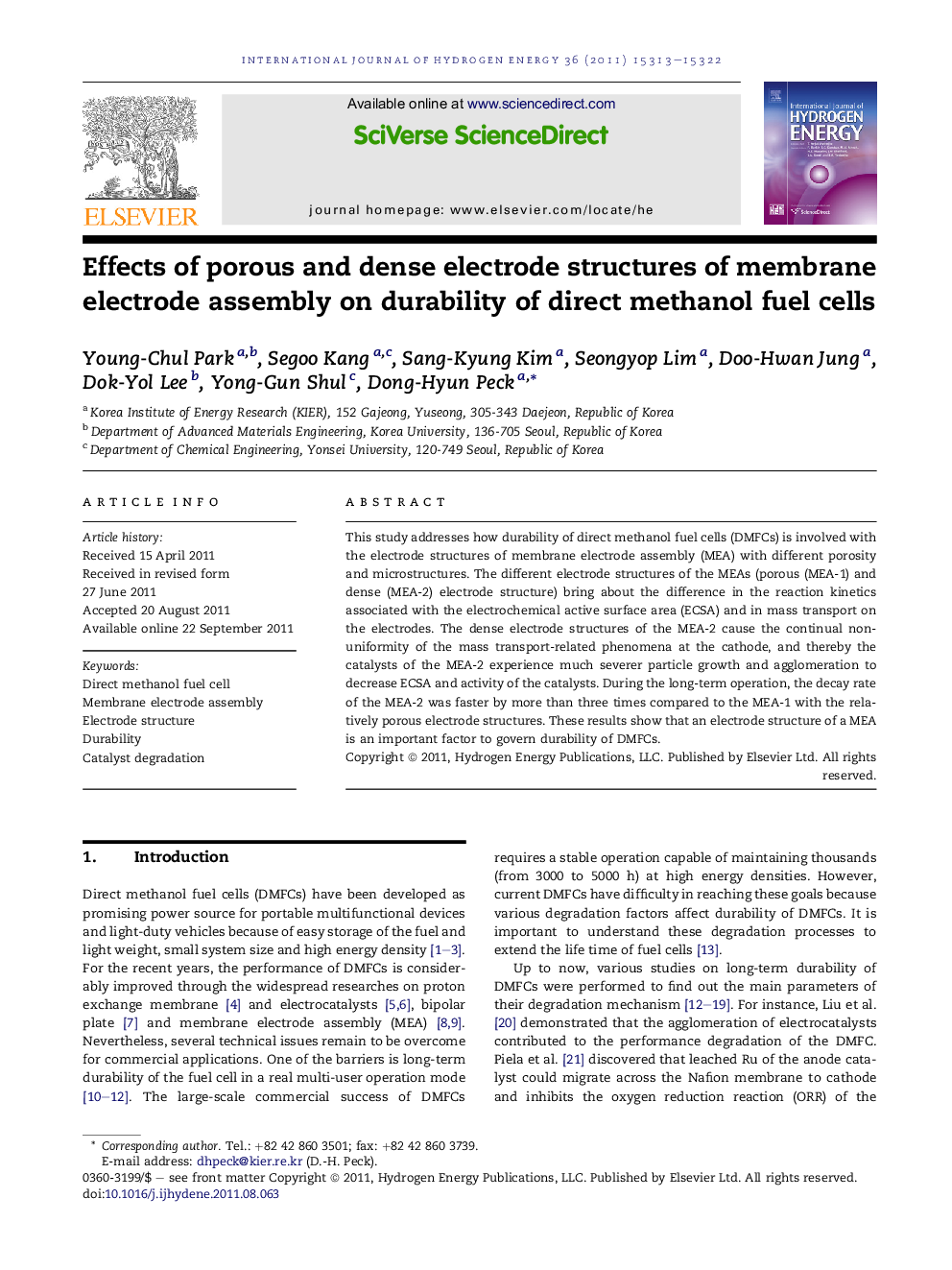| Article ID | Journal | Published Year | Pages | File Type |
|---|---|---|---|---|
| 1271825 | International Journal of Hydrogen Energy | 2011 | 10 Pages |
This study addresses how durability of direct methanol fuel cells (DMFCs) is involved with the electrode structures of membrane electrode assembly (MEA) with different porosity and microstructures. The different electrode structures of the MEAs (porous (MEA-1) and dense (MEA-2) electrode structure) bring about the difference in the reaction kinetics associated with the electrochemical active surface area (ECSA) and in mass transport on the electrodes. The dense electrode structures of the MEA-2 cause the continual non-uniformity of the mass transport-related phenomena at the cathode, and thereby the catalysts of the MEA-2 experience much severer particle growth and agglomeration to decrease ECSA and activity of the catalysts. During the long-term operation, the decay rate of the MEA-2 was faster by more than three times compared to the MEA-1 with the relatively porous electrode structures. These results show that an electrode structure of a MEA is an important factor to govern durability of DMFCs.
Graphical abstractFigure optionsDownload full-size imageDownload as PowerPoint slideHighlights► The durability test for 1350 h of MEA with different porosity and microstructures. ► The higher ECSA of the MEA induces a faster methanol oxidation reaction. ► The MEA with dense structures shows higher decay rate during the long-term tests. ► The electrode structure of a MEA is important for the durability of DMFCs.
